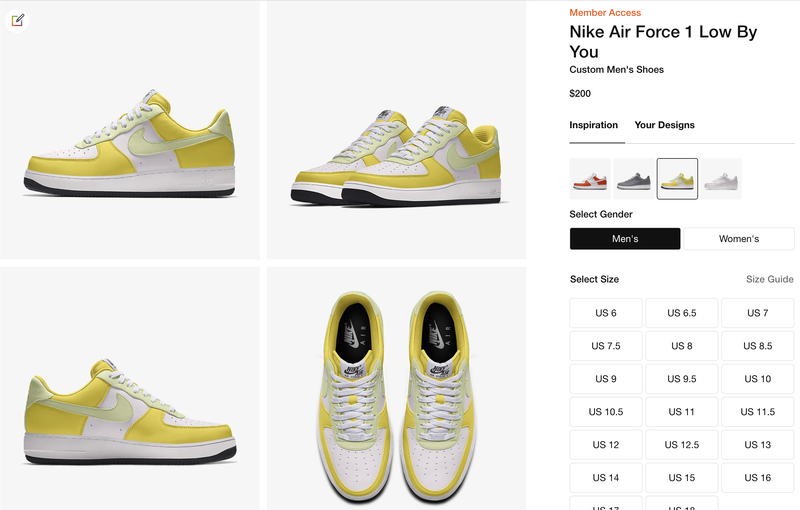
Many businesses find eCommerce challenging because of the dependencies on a number of different technologies, teams and third-party vendors who must do their part to make this channel sing.
Some examples...
- Design teams to construct the right presentation layer (Customer Experience Design)
- Technology (eCommerce) Platforms to enable the design (to enable experiences)
- Technology Agencies to build and configure the design to the eCommerce Platforms
- Advertising Agencies to target the right type of traffic and send it to the right places throughout your site
- Logistics/operations teams to pick, pack orders
- Delivery/courier companies - the dreaded last mile
It takes years of having the right strategic focus, the right investment, and the right teams to make the eCommerce channel a monetary success for the wider business.
But do not despair, there is one thing IN YOUR CONTROL you can do to create amazing end-to-end experiences while you drive your eCommerce evolution, work on issues (created from the above dependencies), drive revenue, and create loyal customers along the way.
This "Secret Sauce" is....Communication.
Through the use of communication, you can compensate for the shortcomings coming from any or all parts of the end to end experience not meeting expectations.
The power of Communication:
Communication is valued by customers because of how impersonal the eCommerce touchpoint can be. This issue is exacerbated when one or more of the dependencies (mentioned above) do not meet customer expectations and employees are hard to reach to resolve things.
Side note, communication is valued by all generations. Even the Millenials who grew up with smartphones, value the extra communication efforts made by a business.
The Australian Institute of Business says there is a direct correlation between transparency and the creation of brand trust.
How can you construct a communication strategy to reduce the negative impacts that can arise when something within the online channel is not working to the right standard?
The first step is to know the pain you are causing.
Know the pain you are causing:
"Pain" is simply defined as, the consumer has an expectation on how something should behave or work, but when he/she is trying to engage with you, this expectation is not being met. This could be many different things such as...
- People are trying to buy from you
- A customer has not yet received their order
- People are trying to engage with content or learn more about a product or service you offer
It's not necessarily the pain YOU are causing, but because people are engaging with you, in their minds, you are causing the pain.
It's your job to identify where this pain is coming from. This can be achieved by taking an empathetic perspective by listening to customers, putting yourself in their shoes. Only once you do this can you see what the pain looks like and determine where it's coming from.
Helpful Tip #1: Don't assume its the first thing you find. Keep digging until no stone is left unturned. You will be surprised what you find as you continue to dig.
Helpful Tip #2: Listen to many customers. Don't just listen to the first five and make conclusions. Trending themes that come from both qualitative and quantitative data sets are needed.
Examples in Action:
It's nice to take the above suggestion on board but how can retailers and B2B's utilise communication when one or many of the above dependencies are not working to the right standard? Below are just two examples to illustrate how communication can be leveraged.
eCommerce Platform:
Many retailers and B2B's know they are on an outdated platform and are planning on changing the technology (planning for a replatform project). BUT, this can take up to a year. So what can you do?
One solution is, for every micro experience that is causing issues, introduce content to set expectations and provide guidance on how to complete it or make it work.
An example of this could be completing an online booking or completing a checkout. It doesn't matter what it is. Creating a guiding narrative will simplify the steps no matter how complicated (or clunky) they may be.
Why does this work?
One of the most common reasons people leave a site us to do with the amount of "Cognitive Load" (also called "Mental Effort") people exert in order to complete online tasks. By guiding people through these arduous tasks, with helpful content, you take the guesswork out of the equation.
Thank of it like this. You have a customer sitting right beside you trying to complete a complex task on the site. How would you guide him/her to complete this task? What would you say? Once you answer that question, turn that into copy and get it on your site.
Quick Case Study:
Around a decade ago, Nike went international with its "Online Shoe Builder". It was a unique and customized experience that would enable consumers to build their own shoes. It was a first of its kind.
However, it was so confusing, people found it very difficult to complete and it was virtually impossible to engage with on mobile screens. This is something Nike was very quiet about. Had they injected little content snippets to guide people through the steps, it would have been an online success.
Nike's approach to customising shoes is now dramatically different. People can make adjustments to existing shoe designs instead of "building" a shoe.

Delivery - the dreaded last mile:
A second and final example is a retailer or B2B having issues with the reliability around last-mile couriers. With COVID and all the ripple effects that come with the pandemic, courier companies do have legitimate reasons for being less reliable for last-mile delivery, however, this does not stop the following from happening...
- Customers call the retailer/B2B seeking updates on their order
- Customers become frustrated with the retailer/B2B (not the courier)
- The retailer/B2B loses customers - loyalty becomes threatened
The same concept above for the eCommerce platform applies here. But instead of providing helpful content on the site, retailers and B2B's activate an email communication plan to send updates to customers each time a delivery step has been completed. The customer could receive the following updates...
- Order picked and packed and ready for pick up
- Order picked up by the courier and is on its way
- Order is going to be delivered today
- Order delivered
Couriers like Australia Post have their own updates but retailers and B2B's want to own this communication strategy to ensure language is completed "in brand". Secondly, by owning the communication, retailers and B2B's have the chance to introduce more promotional material.
Quick Case Study:
A retailer had over 1,000 incoming calls and emails per month seeking updates on their orders because of the poor courier performance. The retailer could not change the courier or fix the issue in the short term so we embarked on a triggered "email marketing communication" project. The approach was to connect the email marketing software to the delivery and logistics software so as to send triggered delivery updates based on specific "flags" in the system that represented one step towards a customer receiving his/her order.
Not only did customer satisfaction rise, but two other things happened...
- Those 1,000 incoming calls was reduced to under 100, freeing up two support staff to work on content.
- The promotional content that was added to these emails stimulated new online sales, converting 5%!
This approach to communication took the urgency away from the "courier issue" and allowed the retailer to take its time in managing the courier company and resolving the logistical issues.
Conclusion:
Many times it's the easiest thing that can resolve the most complicated issues. In the case of resolving business-wide issues impacting the online eCommerce channel, start by listening to the customer's pain, and then speak to your customers as if they were sitting beside you seeking help.
This article was as tagged as B2B , eCommerce Consulting , eCommerce Conversion Rate Optimisation , UX Design